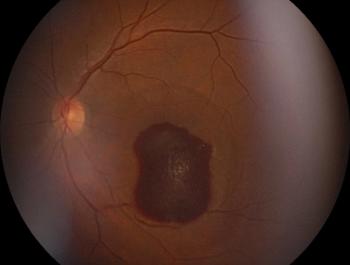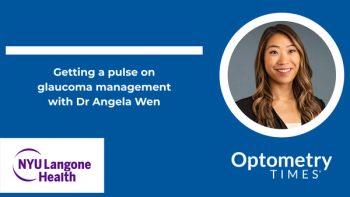
Qlaris Bio announces development of QLS-111-FDC
This new QLS-111 and latanoprost fixed-dose combination (QLS-111-FDC; Qlaris) is in development for the treatment of primary open-angle glaucoma, ocular hypertension, and normal-tension glaucoma in patients whose optimal intraocular pressure control may remain “unachievable” due to needing to lower episcleral venous pressure.
Clinical-stage biotechnical company Qlaris Bio recently announced the development of a novel preservative-free, fixed-dose combination (FDC) therapy, combining QLS-111 and latanoprost.1
This new QLS-111 and latanoprost fixed-dose combination (QLS-111-FDC) is in development for the treatment of primary open-angle glaucoma (POAG), ocular hypertension (OHT), and normal-tension glaucoma in patients whose optimal intraocular pressure (IOP) control may remain “unachievable” due to needing to lower episcleral venous pressure (EVP). QLS-111 targets EVP, the only remaining component of IOP left unaddressed by currently approved treatments.
“Combining QLS-111 with latanoprost in a preservative-free fixed-dose combination is a very promising and exciting advancement,” said Alex Huang, MD, PhD, associate professor at the Shiley Eye Institute at UC San Diego Health, in a news release.
“This approach targets 2 distinct and complementary mechanisms and could offer improved IOP control in a single topical eye drop – something that aligns well with real-world needs of patients surrounding [adherence] and long-term IOP control. Targeting the reduction of EVP and distal outflow to lower IOP represents a fundamental shift in how we think about glaucoma therapy.”
QLS-111 is Qlaris Bio’s lead program, utilizing an ATP-sensitive potassium channel modulator that lowers IOP through selective reduction of EVP. Latanoprost is the most prescribed prostaglandin analogue for the treatment of glaucoma, lowering IOP by increasing uveoscleral outflow.
“Patients who remain uncontrolled on monotherapy often face challenges with multidrug therapy, which can negatively impact adherence and outcomes,” said Barbara Wirostko, MD, FARVO, chief medical officer of Qlaris Bio, in a news release.
Phase 2 study data, evaluating QLS-111 in POAG and OHT patients, demonstrated that QLS-111 administered in addition to latanoprost monotherapy achieved more than 33 mm Hg of additional IOP reduction compared with latanoprost monotherapy alone.
“A fixed-dose combination simplifies treatment regimens and, with the strong safety and additive efficacy profile of QLS-111, may offer an important option for patients requiring further IOP lowering. Importantly, the recently completed phase 2 studies show that QLS-111 does not cause additional hyperemia, which will be important for patient [adherence],” Wirostoko said.
Reference:
1. Qlaris Bio Announces Development of Fixed-Dose Combination Therapy with QLS‑111 and Latanoprost for the Treatment of Glaucoma. Published June 11, 2025. Accessed June 11, 2025. https://www.businesswire.com/news/home/20250611125298/en/Qlaris-Bio-Announces-Development-of-Fixed-Dose-Combination-Therapy-with-QLS111-and-Latanoprost-for-the-Treatment-of-Glaucoma
Newsletter
Want more insights like this? Subscribe to Optometry Times and get clinical pearls and practice tips delivered straight to your inbox.




















































.png)


